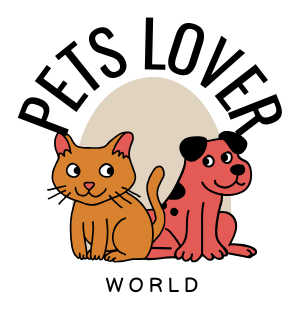What Does a Normal Puppy Belly Look Like?
Let’s explore What Does a Normal Puppy Belly Look Like? Puppies, with their boundless energy and curious nature, are a delight to behold.
As new puppy owners, it’s natural to have questions and concerns about their health and well-being, including the appearance of their bellies.
In this comprehensive informational blog, we’ll explore what constitutes a normal puppy belly, addressing common questions and providing insights to help you better understand your furry friend.
Understanding Puppy Anatomy

Before delving into the specifics of a normal puppy belly, let’s take a moment to understand the basic anatomy of puppies.
Like adult dogs, puppies have a body divided into several distinct regions, including the head, neck, torso, and limbs.
The belly, also known as the abdomen, is the area beneath the ribcage and above the hind legs.
Characteristics of a Normal Puppy Belly
A normal puppy belly should exhibit several key characteristics that indicate good health and vitality:
1. Rounded Shape
- A normal puppy belly typically has a rounded or slightly bulging appearance, especially after eating or drinking. This rounded shape is due to the presence of internal organs, including the stomach, intestines, liver, and kidneys.
2. Soft and Supple Skin
- The skin covering a normal puppy belly should feel soft, smooth, and supple to the touch. Healthy puppy skin is typically free from lumps, bumps, or abnormalities.
3. Pink or Lightly Pigmented
- The skin on a puppy’s belly is often pink or lightly pigmented, depending on the breed and individual characteristics. It should not appear excessively red, inflamed, or irritated, which could indicate a skin issue or underlying health problem.
4. No Visible Signs of Swelling or Distention
- A normal puppy belly should not exhibit any visible signs of swelling, distention, or bloating. While some degree of fullness is normal, excessive bloating or distention could be indicative of gastrointestinal issues such as gas, constipation, or intestinal blockage.
5. Absence of Pain or Discomfort
- A healthy puppy should not show signs of pain or discomfort when their belly is gently palpated or touched. They should exhibit normal behavior, including eating, drinking, playing, and sleeping, without any signs of distress.
Factors Affecting Puppy Belly Appearance

Several factors can influence the appearance of a puppy’s belly, including:
1. Age and Growth Stage
- The appearance of a puppy’s belly may vary depending on their age and growth stage. Younger puppies may have softer, more pliable skin, while older puppies may develop firmer muscle tone as they grow.
2. Breed and Body Type
- Different breeds of dogs may have varying body types and belly shapes. For example, breeds with deep chests, such as Great Danes or Doberman Pinschers, may have more pronounced bellies compared to breeds with narrower chests, such as Greyhounds or Whippets.
3. Feeding and Nutrition
- A puppy’s diet and nutrition can also influence the appearance of their belly. Proper feeding practices, including feeding high-quality puppy food in appropriate amounts, can help maintain a healthy body condition and prevent obesity or malnutrition.
Signs of an Abnormal Puppy Belly

While a normal puppy belly is typically soft, rounded, and free from visible abnormalities, there are certain signs that may indicate an underlying health issue:
1. Distended or Bloated Appearance
- Excessive bloating or distention of the belly could be indicative of gastrointestinal problems such as gas, bloat, or intestinal blockage. Immediate veterinary attention is needed if your puppy’s belly appears abnormally swollen or distended.
2. Redness, Swelling, or Irritation
- Redness, swelling, or irritation of the skin on your puppy’s belly could be signs of a skin infection, allergic reaction, or other dermatological issue. Consult your veterinarian if you notice any changes in your puppy’s skin or coat.
3. Signs of Pain or Discomfort
- If your puppy shows signs of pain or discomfort when their belly is touched or palpated, it could indicate an underlying health problem such as abdominal pain, gastrointestinal issues, or injury.
4. Changes in Eating or Drinking Habits
- Changes in your puppy’s eating or drinking habits, including decreased appetite, vomiting, diarrhea, or excessive thirst, may indicate digestive issues or other health concerns that require veterinary attention.
5. Behavioral Changes
- Changes in your puppy’s behavior, such as lethargy, reluctance to move or play, or vocalizing in distress, may be signs of pain or discomfort related to their belly. Monitor your puppy closely for any changes in behavior and consult your veterinarian if you have any concerns.
Conclusion

In conclusion, understanding what constitutes a normal puppy belly is essential for monitoring your puppy’s health and well-being.
By familiarizing yourself with the characteristics of a healthy puppy belly and being alert to any signs of abnormality, you can provide the best possible care for your furry friend.
Remember to consult your veterinarian if you have any concerns about your puppy’s health or if you notice any changes in their belly or overall condition.
FAQs (Frequently Asked Questions)
Here are some FAQs related to What Does a Normal Puppy Belly Look Like:
- How can I tell if my puppy’s belly is normal?
- A normal puppy belly should have a rounded shape, soft and supple skin, and a pink or lightly pigmented appearance. It should not exhibit signs of swelling, distention, or discomfort when touched.
- What should I do if my puppy’s belly looks swollen or bloated?
- If your puppy’s belly appears swollen or bloated, it could be indicative of a serious health issue such as bloat or intestinal blockage. Contact your veterinarian immediately for evaluation and treatment.
- Is it normal for puppies to have pink or lightly pigmented bellies?
- Yes, it’s normal for puppies to have pink or lightly pigmented bellies, especially if they have lighter-colored fur. However, if you notice any changes in color or texture, or if the skin appears irritated or inflamed, consult your veterinarian for advice.
- How often should I check my puppy’s belly for signs of abnormality?
- It’s a good idea to regularly monitor your puppy’s belly during grooming or cuddle sessions. Pay attention to any changes in appearance, texture, or behavior, and consult your veterinarian if you have any concerns.
- What should I feed my puppy to maintain a healthy belly?
- Feeding your puppy a balanced diet consisting of high-quality puppy food formulated for their age, size, and breed is essential for maintaining a healthy belly. Avoid overfeeding and stick to recommended feeding guidelines provided by your veterinarian or pet food manufacturer.
Related Posts :
- Let’s Understand: Why Westies Are the Worst in 2024?
- Let’s Understand Why Schnauzers Are the Worst Dogs in 2024
- Let’s understand Is Pura Safe for Cats?

